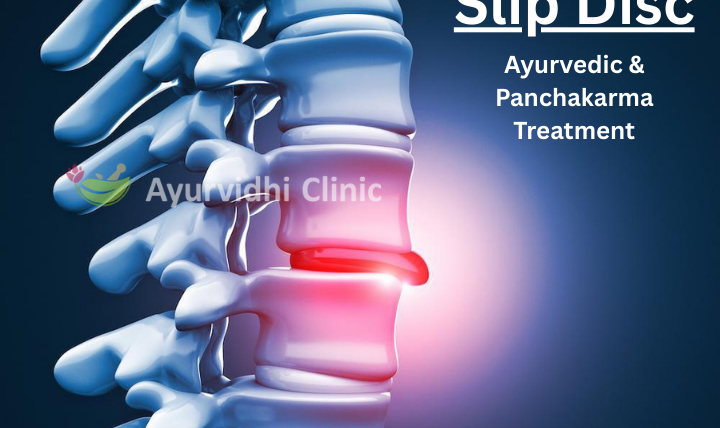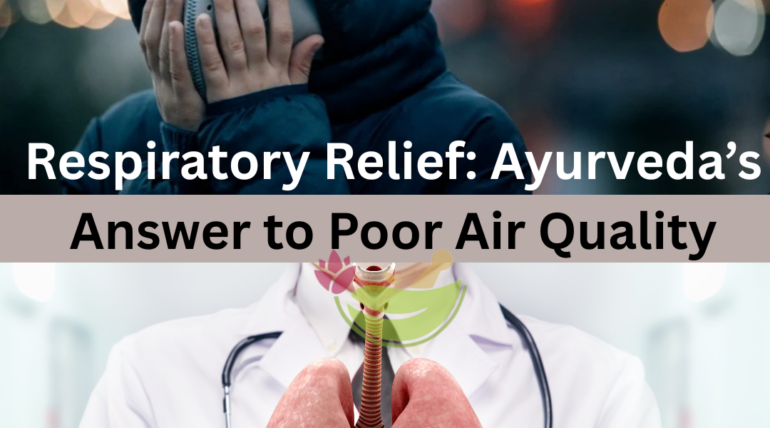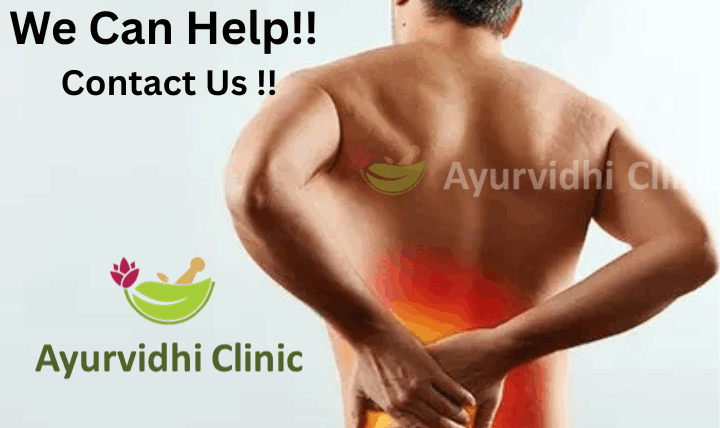Slip Disc Relief Naturally: Ayurveda & Panchakarma Care
Slip Disc: Ayurvedic & Panchakarma Treatment for Natural and Long-Term Non- surgical Relief
Slip Disc, also known as disc prolapse or herniated disc, is a common spinal problem that causes severe back pain and nerve compression. It is increasingly seen due to long sitting hours, poor posture, lack of exercise, stress, and aging.
Modern treatment often relies on painkillers, steroids, or surgery. These may give short-term relief but do not always correct the root cause. Ayurveda offers a natural, safe, and effective approach by balancing dosha, strengthening the spine, and reducing nerve inflammation.
Suffering from back pain or radiating leg pain? Consult our Ayurvedic specialist today. @https://ayurvidhiclinic.com/contact-us/
What is Slip Disc According to Ayurveda?
In Ayurveda, Slip Disc is associated with Vaata Vyadhi.
When Vaata Dosha becomes aggravated, it leads to dryness, degeneration, and weakness of spinal discs (Asthi & Majja Dhatu).
Common Ayurvedic causes include:
-
Long sitting or wrong posture
-
Excessive physical strain
-
Aging and degeneration
-
Lack of lubrication in joints
-
Weak digestion (Agni)
-
Stress and anxiety
Get your dosha assessment done to know the exact cause of your pain. @ayurvidhi_clinic
Common Symptoms of Slip Disc
-
Severe lower back or neck pain
-
Pain radiating to legs or arms (sciatica)
-
Numbness or tingling sensation
-
Muscle weakness
-
Difficulty walking or bending
-
Stiffness and restricted movement
Early treatment prevents nerve damage and surgery.
Do not ignore radiating pain—early Ayurvedic care can help.
Ayurvedic Treatment for Slip Disc
Ayurveda focuses on Vaata pacification, tissue nourishment, and muscles – nerve strengthening.
🔹 Herbal Medicines
Commonly used herbs:
-
Guggul Kalpa
-
Rasna, Ashwagandha, Bala medicine
Benefits:
✔ Reduces inflammation
✔ Nourishes discs
✔ Strengthens nerves
✔ Improves flexibility
Get customized Ayurvedic medicines prepared under Vaidya supervision.
Role of Panchakarma in Slip Disc Treatment:
Panchakarma plays a crucial role in managing disc problems.
Basti (Medicated Enema Therapy)
Best therapy for Vata disorders; strengthens spine and nerves.
Abhyanga (Oil Massage)

Relieves muscle stiffness and improves circulation.
Swedana (Herbal Steam Therapy)

Reduces pain and improves mobility.
Kati Basti

Localized oil pooling therapy for lumbar and cervical disc problems.
Pizhichil

Lubricates joints and supports spinal regeneration.
Ask about our Slip Disc Panchakarma Rehabilitation Program. @https://ayurvidhiclinic.com/panchakarma/
🥗 Diet & Lifestyle for Slip Disc Recovery
Recommended:
-
Warm, nourishing food
-
Ghee, milk (if suitable)
-
Green vegetables
-
Turmeric and ginger
-
Gentle yoga and physiotherapy
Avoid:
-
Cold and dry foods
-
Excessive travel
-
Heavy lifting
-
Long sitting without breaks
Get a personalized Ayurvedic diet and lifestyle plan for spine health. @https://ayurvidhiclinic.com/services/
Why Choose Ayurveda for Slip Disc?
✔ Natural & safe
✔ Avoids surgery in many cases
✔ Strengthens spine naturally
✔ Long-term relief
✔ Improves quality of life
✔ Suitable for chronic conditions
Ayurveda treats the root cause—not just pain. For best ayurvedic & panchakarma treatment for Slip Disc contact @https://ayurvidhiclinic.com/contact-us/
🏥 Our Clinic’s Special Approach to Slip Disc Care
At our Ayurvidhi Ayurvedic clinic, we offer:
-
Detailed spinal assessment
-
Personalized Panchakarma therapies
-
Authentic Ayurvedic medicines
-
Rehabilitation and prevention guidance
-
Post-treatment care and follow-up
We are the best ayurvedic clinic in Lohegaon- Dhanori for slip Disc treatment
Book your Ayurvedic consultation today and take the first step toward pain-free movement.@https://ayurvidhiclinic.com/contact-us/
Regain Mobility, Reduce Pain Naturally
Slip Disc does not always need surgery. With timely Ayurvedic treatment and Panchakarma, many patients experience lasting relief and improved mobility.
📞 Call now to schedule your appointment @https://ayurvidhiclinic.com/contact-us/
📍 Visit our clinic for holistic spine care @https://www.google.com/maps/place/Ayurvidhi+Clinic/data=!4m2!3m1!1s0x0:0xc5de21061f105a92?sa=X&ved=1t:2428&ictx=111















Recent Comments